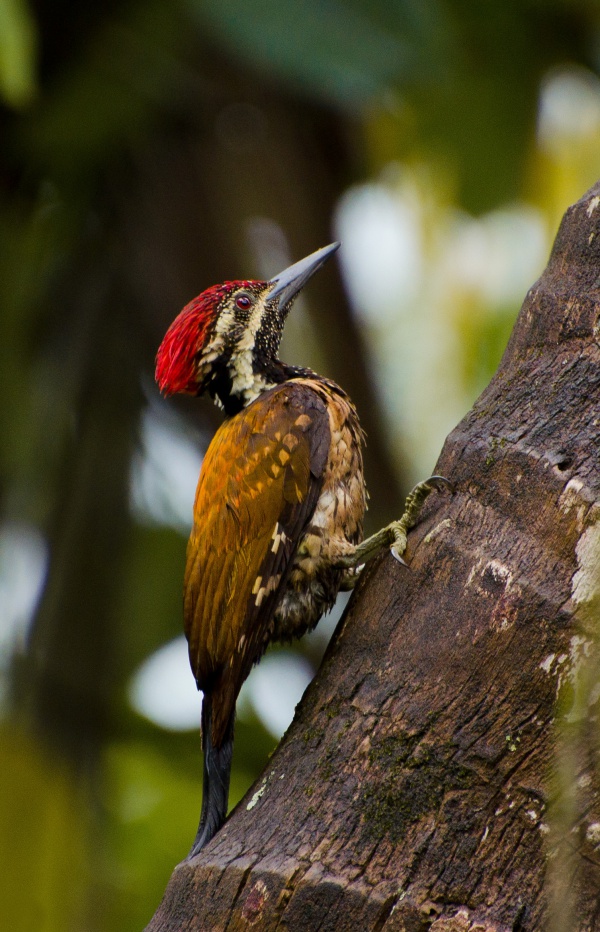Facts About Black-rumped flameback
The black-rumped flameback, also known as the lesser golden-backed woodpecker, is a striking bird indigenous to the Indian subcontinent. This woodpecker can often be spotted in bustling urban areas, recognized by its distinctive call and wave-like flight pattern. One of its most notable features is the black markings on its throat and rump. This species has been of interest to scientists for a long time, with Carl Linnaeus officially naming it in 1758. It belongs to the genus Dinopium and has five recognized subspecies.
Visually, the black-rumped flameback is quite remarkable. It is a large woodpecker with the classic woodpecker shape. Its wings are a vibrant golden yellow, which sharply contrasts with its black rump. The underparts are white, adorned with dark chevron patterns on the flanks, and it has a black throat with fine white streaks. Males possess a striking red crown and crest, whereas females have a black forecrown speckled with white. Juveniles resemble females but have a duller appearance. Like other woodpeckers, it has a straight, pointed bill, zygodactyl feet designed for gripping, and a long tongue perfect for catching insects.
This woodpecker is remarkably adaptable, ranging from Pakistan to Sri Lanka. It thrives in open forests, farmlands, and even urban environments. They are often seen in pairs or small groups, sometimes mingling with other bird species while foraging. Their diet mainly consists of insects such as beetle larvae, but they also enjoy nectar. The breeding season spans from February to July. During this period, they excavate nest holes in trees or mud banks, laying elongated, glossy white eggs, usually in clutches of three.

 Myanmar (Burma)
Myanmar (Burma)